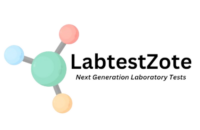LIMS refers to a computerized information management system for laboratories
Functions of LIMS
- Sample Management
- Instrument and application Integration
- Electronic Data Exchange
- Additional Functions
Depends on the user case and how sophisticated the lab system is.
Sample Management
- Creation of request and issuing of sample container.
- Registration of sample details on the system – Accessioning
- Barcoding
- Documenting sample custody and movement along the chain
- Allocation of storage eg freezer space – room/rack etc
Electronic Data Exchange
- Increased data volumes and business needs – increased attention to how input/output data is handled.
- Integration with mobile platforms
- Transition from proprietary to open source DB systems revolutionalised data exchange.
- Many modern LIMS support real time interfacing with EHRs in hospital/clinical operation.
- Instrument and application Integration
- Modern LIMS software can integrate directly to computerized laboratory equipment.
- Harvest a lot more data points than manual input. Eg RT-PCR
- LIMS software may control analytic process in the equipment.
- Extraction of raw and processed data.
- Allows for more in-depth data analysis
Additional Functions
-
- Audit Management
- Barcode handling
- Chain of custody
- Compliance – HIPPA
- CRM
- Document Management
- Instrument calibration and management
- Inventory & equipment management
- Personnel & workload Management
- QA & QC
- Reporting
- Time tracking
Types of LIMS architecture
Thick Client
- Thick-client LIMS is a more traditional client/server architecture
- Data processing on client computer, then passed to server for storage primarily
- Advantages- Faster data processing, more interactivity & customization.
- Disadvantages- need for robust client computers, time consuming updates, limited scalability.
Thin-Client
- Modern architecture with LIMS software in Server / host, accessed through web browser
- All software tasks handled by the server, automatically seen by all clients
- Advantages
- Lower costs
- Fewer network maintenance issues
- Disadvantages – Need for real-time access to server
Hybrid Systems
- Web- Enabled – A thick client with added web browser components.
- Added advantage of access to data from a web browser
- Web Based LIMS – Hybrid of thick/thin systems. Disadvantage
- SAAS – Cloud based systems- The future?
Rationale of Laboratory Information System
- Improve data management in lab to increase lab potential
- Enable centralization of information
- Support and enhance business processes of the lab
- Take advantage of new lab information technology
- Provide easy and timely access to data
Factors to Consider when Choosing A LIMS System
- Type of labReference/research/public health
- Volume of specimens
- Types and number of tests
- Size of staff/users
- Existing system
- Determine which areas will be affected
- Requirements and expectations
- Avoid ‘culture shock’
Evaluating LIMS Systems
- LIMS capabilities
- System validation/maintenance
- Interfacing capabilities
- Confidentiality/data integrity protection
- Regulatory compliance/accreditation.
LIMS: Challenges
- Cost
- Technical Capacity
- Interoperability, Backward Compatibility
- Data Security – Data Breach, Ransomware
- Regulatory compliance/accreditation.
